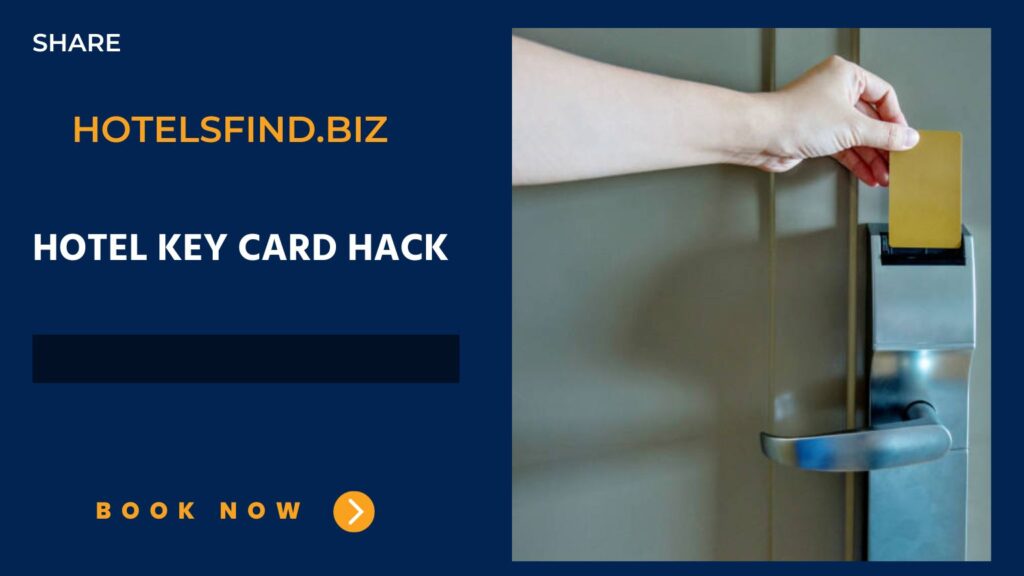What are Hotel Key Card Hacks? (All Hacks Explain) In 2024
Hotel key card systems have revolutionized guest access, replacing traditional lock and key mechanisms. What are Hotel Key Card Hacks?
These electronic cards have become ubiquitous in the hospitality industry, offering convenience and security.
This article aims to delve into the intricacies of hotel key card technology, uncovering potential vulnerabilities and exploring methods to safeguard against hacks.

Evolution of Key Card Systems
The evolution of hotel key cards traces back to their introduction in the late 20th century.
From magnetic stripe cards to RFID (Radio-Frequency Identification) and NFC (Near Field Communication) technology, key card systems have advanced significantly, enhancing guest experience and hotel security.
How do Key Card Systems Work?
Key card systems operate through encrypted data stored on the card’s chip. When inserted or swiped, the reader authenticates the information and grants access if valid.
RFID and NFC technology have streamlined this process, allowing contactless card reading, and reducing friction for guests.
Security Measures in Key Card Technology
Security measures in key card technology are essential safeguards to protect against unauthorized access.
These measures often include encryption protocols, unique identifiers, and authentication processes embedded within the card’s chip.
They aim to secure the data stored on the card and ensure that only authorized individuals can gain access.
Encryption methods help prevent data interception, while unique identifiers and authentication processes verify the card’s legitimacy, enhancing overall security within key card systems.
Common Types of Hotel Key Card Hacks
Hackers exploit weaknesses in key card systems, employing various techniques such as brute force attacks, cloning, and RFID/NFC interception.
These vulnerabilities raise concerns about guest safety and privacy breaches.
Common types of hotels key card hacks encompass various methods employed by hackers to gain unauthorized access to rooms. These include:
- Brute Force Attacks: Hackers attempt multiple combinations or methods to break into the key card system.
- Cloning: Copying the information from a legitimate key card to create a duplicate, granting unauthorized entry.
- RFID/NFC Interception: Intercepting the communication between the card and the reader to capture data for unauthorized use.
- Exploiting Weaknesses: Identifying and exploiting vulnerabilities within the system, such as outdated software or weak encryption.
These hacks pose serious security risks, potentially compromising guest safety and privacy within hotels.
Vulnerabilities in Key Card Systems
Outdated software, weak encryption, and inadequate system maintenance contribute to vulnerabilities. Instances of hacking incidents highlight the pressing need for robust security measures.
Real-Life Instances of Hacks
Notable cases of hotel key card hacks underscore the severity of these vulnerabilities.
Instances where hackers gained unauthorized access to rooms have heightened concerns within the hospitality industry.
Best Practices for Hotel Security
Hotels must implement stringent security practices, including regular software updates, encryption enhancements, and staff training. These measures can mitigate the risks associated with key card systems.
Advances in Key Card Security
Technology continues to evolve to combat vulnerabilities. Advancements like biometric integration, blockchain authentication, and dynamic encryption algorithms show promise in bolstering security.
Importance of Regular System Updates
Regular system updates are critical for maintaining the security and functionality of any technology.
They patch vulnerabilities, bolster defenses against evolving threats, and ensure optimal performance.
By staying current with updates, systems remain fortified, reducing the risk of potential breaches and enhancing overall reliability.
People also ask
Can you replicate a hotel key card?
Replicating a hotel key card involves copying the data stored on a legitimate card onto a blank card.
Hackers often use specialized equipment to read and duplicate the information, creating a cloned card that can grant unauthorized access to hotel rooms.
What is the master key in a hotel?
In a hotel, a master key is a special keycard or set of keys that provides access to multiple rooms or areas within the establishment.
It’s a high-level access tool typically used by hotel staff, such as managers or maintenance personnel, to open various doors without needing individual guest key cards.
Do magnets mess up hotel key cards?
Yes, strong magnets can potentially interfere with the magnetic stripe on hotel key cards, causing data corruption or erasure.
It’s advised to keep key cards away from magnets or magnetic fields to prevent damage and ensure their proper functionality.
What is inside a hotel key card?
A hotel key card typically contains a magnetic stripe, RFID (Radio-Frequency Identification), or NFC (Near Field Communication) chip.
This embedded technology stores encrypted data that grants access to hotel rooms when read by the card reader, facilitating secure entry for guests.
Conclusion
In conclusion, the concept of the “hotel’s key card hack” underscores the importance of security vulnerabilities that exist in technology.
While these hacks may have raised awareness about potential weaknesses in hotel key card systems, they also highlight the need for constant vigilance and improvement in securing such systems against unauthorized access.
Hotel chains and security experts must continually work together to enhance and fortify these systems to ensure the safety and privacy of guests.







